Azores Travel Guide: Whales, Dolphins and Volcanoes
With smouldering volcanoes, incredible coastlines, and many whale and dolphin-spotting opportunities, the Azores has more in common with Hawaii than Europe.
"Unique" is an overused phrase in travel guides, but it certainly applies to the Azores - in triplicate. Nowhere else in Europe can you stand on the edge of a smouldering caldera, visit a tea plantation and enjoy a delicious locally-grown pineapple on the same day.
Despite technically being part of the EU, the island chain has more in common with Hawaii than Europe. With captivating coastlines, stunning volcanoes, an abundance of whales and dolphins, the Azores offers a serene and natural respite from the modern world.
Fall in love with the Azores, with our guide.
Which Azores island should I visit?
The Azores chain lies about 1,000 miles west of the Portuguese mainland and includes nine major islands and several smaller ones.
The archipelago is comprised of three groups: the eastern group, consisting of the Formigas islets, São Miguel, and Santa Maria; the central group, comprising Faial, Pico, São Jorge, Terceira, and Graciosa; and the northwestern group, made up of Corvo and Flores.
Below we explore what you can expect from the main islands. A two-week break should be enough time to visit several.
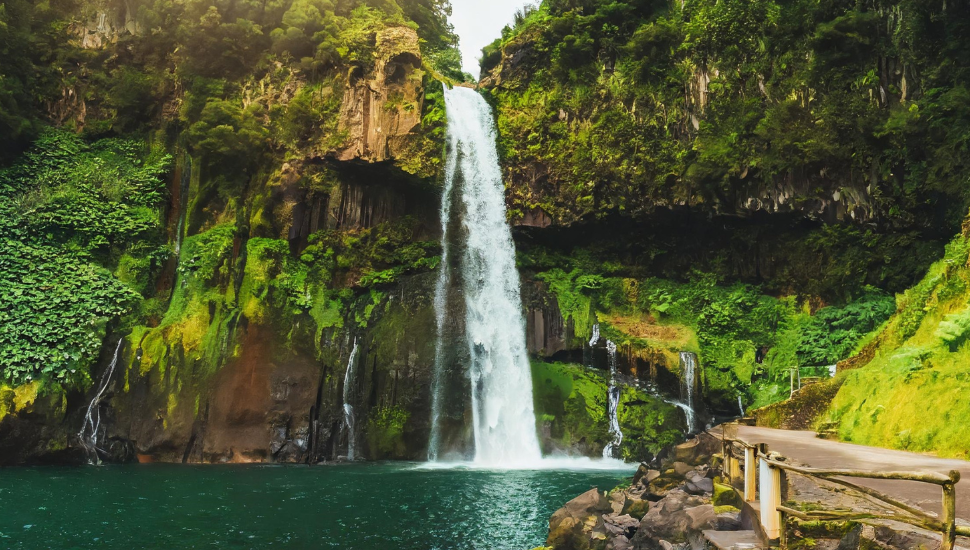
São Miguel
The beautiful island of São Miguel offers an array of outdoor pursuits. Here you can bathe in the rust-coloured hot springs of Parque Terra Nostra while surrounded by stunning botanical gardens, visit the twin lakes of Caldeira das Sete Cidades, set in the crater of an old volcano, and explore the Lagoa do Fogo, where mountains, lakes, and stunning coastline can be enjoyed on a single hiking trail.
You can also visit a working tea plantation (Plantações de Chá Gorreana) and see breathtaking forest waterfalls in Salto de Prego.
The Azores capital, Ponta Delgada, is located on São Miguel.
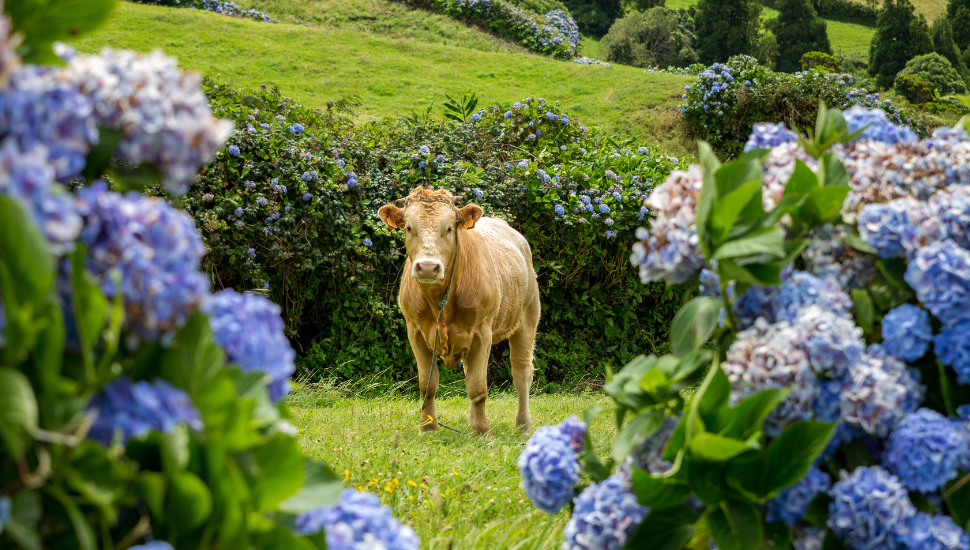
Faial
On Faial, you'll find Europe's most westerly point - the Capelinhos Volcano. You'll also find a profusion of blue hydrangeas - giving Faial its other name, "The Blue Island".
It only takes an hour to drive around Faial, but you wouldn't want to move so quickly: here you can ascend two volcanoes, take a dip in a natural swimming pool, and go whale watching.
Faial feels less wild than other Azores islands, but is still stunning in its own way.

São Jorge
Diminutive it may be, but São Jorge boasts dramatic scenery, hemmed in with mountains that descend into verdant ravines, craggy cliffs, caldera lakes, and intriguing fajãs (plains that formed from ancient lava flows).
A mecca for outdoor lovers, here you can try spelunking, canoeing, hiking, and mountain biking. But there's something for cheese enthusiasts, too: the factory that produces the characterful and robust Queijo São Jorge - and yes, free samples are available.
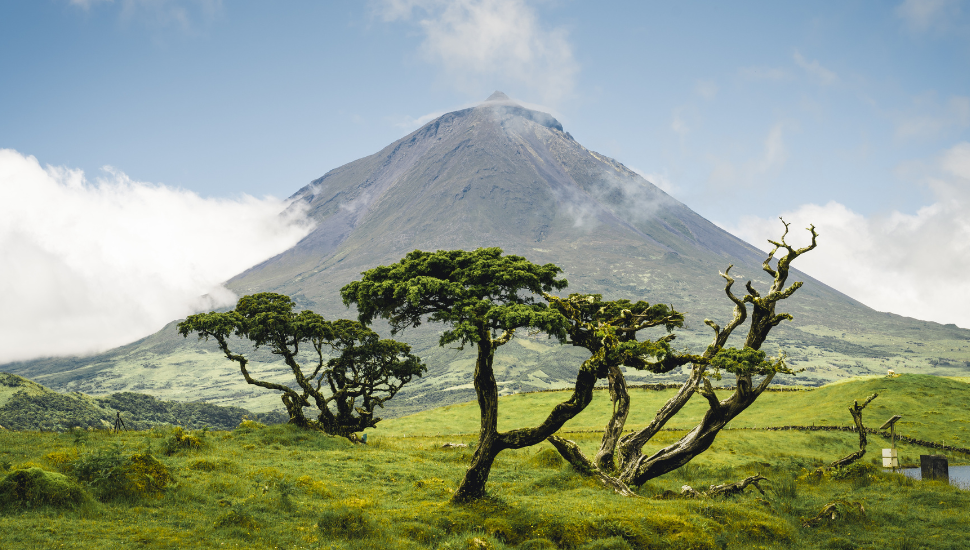
Pico
Pico, with its UNESCO-listed vineyards, is covered in basalt rock and dark volcanic soil - making it perfect for winemaking.
Complex red and white wines have been made here since the 15th century - as documented in the dedicated wine museum. And beneath this fertile land lies one of the world's longest lava tubes, Gruta das Torres, where you can view stalactites and stalagmites that have never seen the light of day.
Moving up from sea level, you'll find Mount Pico, soaring 7,700 ft above the Atlantic (it’s Portugals’ highest peak) .
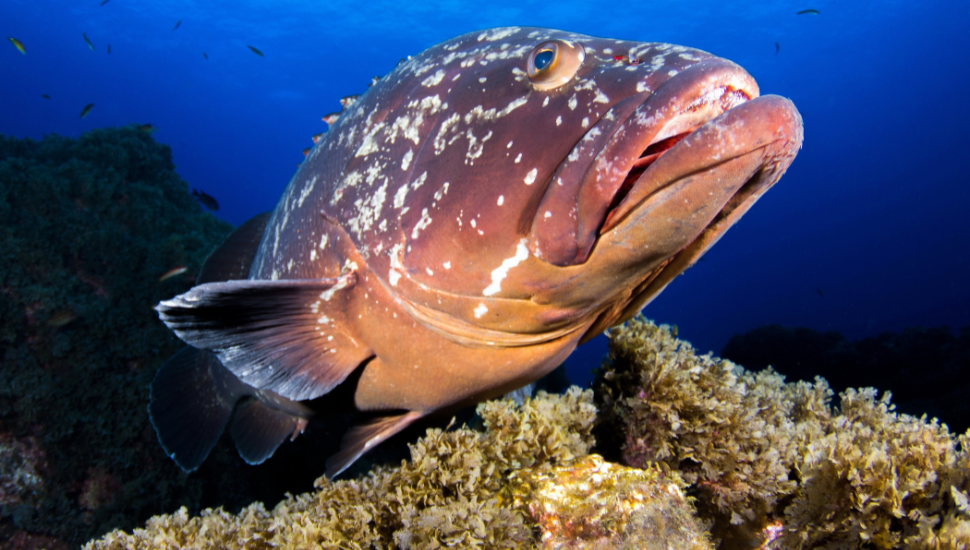
Santa Maria
Known as the archipelago's "mother island", Santa Maria isn't as mountainous as its siblings but is much loved for its pale yellow sandy beaches and warm, azure-blue waters.
It’s also a jumping-off point for the fabulous Formigas nature reserve and the dramatic Dollabarat Bank rock formation to the island's northeast. The latter is regarded as one of Europe's most rewarding dive locations.
Elsewhere you'll find forests teeming with life, pastoral scenes, and whitewashed houses akin to those on the Portuguese mainland.

Terceira
Somewhat reminiscent of the English countryside, the patchwork fields of Terceira are home to many, many cattle - in fact, they outnumber the human population 2-to-1.
The towns are also visually beguiling - particularly the UNESCO-listed Angra do Heroísmo, with its vibrant facades and meandering cobbled streets.
But the big-ticket attraction on Terceira is Algar do Carvão, an ancient cave where you'll find some of the planet's oldest stalactites.
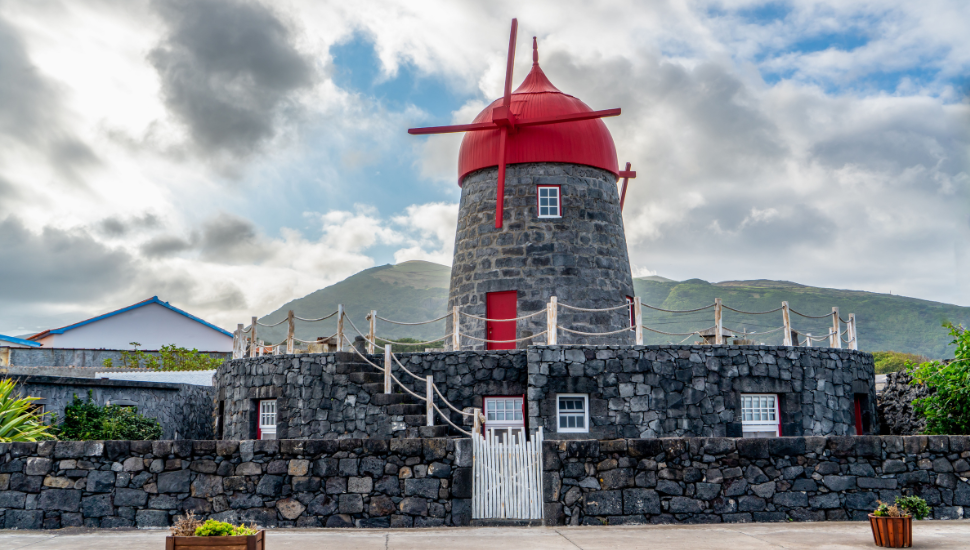
Graciosa
With its deep waters, Graciosa is one of the best places to embark on a dolphin or whale-spotting excursion. But the island has equally appealing delights for landlubbers, in the form of its stunning yet serene coastline, peppered with charming red-turreted windmills.
It's also home to the critically endangered Azorean dwarf donkey, which reportedly number just 20.
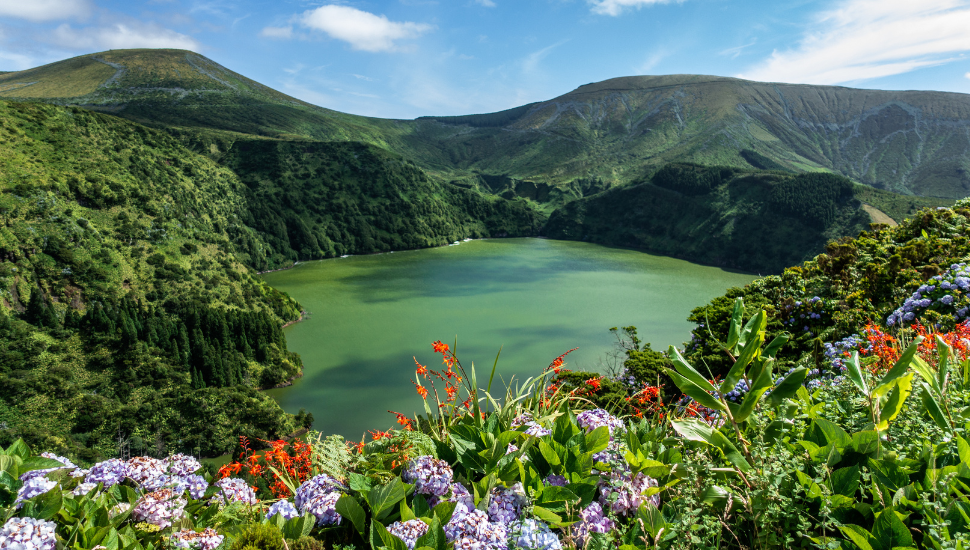
Flores
True to its name, dazzling goldenrods and pink and blue hydrangeas cover Flores. As one of the very few UNESCO Biosphere Reserves, it's a wonderland of botanical gardens and lush natural vistas.
Lagoons, lakes, and waterfalls are found in abundance here thanks to the high annual rainfall. Little wonder Flores is extremely popular with lovers of the outdoors.
How long does it take to fly to the Azores?
Flights from the UK to the Azores take just over 4 hours, which might be considered short given the wildly different landscapes and temperatures.
Is the Azores expensive?
The Azores is a very affordable destination. Rooms in highly rated guest houses can cost as little as £40 GBP per night, while 4-star hotels can be booked for less than £100.
Restaurant meals cost from £8 - 13 per person, while taxis cost around £3 then about 60p per km.
When is the best time to visit the Azores?
While the sunshine can last well into November, visiting the Azores from June to October will all but ensure warm temperatures.
How do I travel between the Azores islands?
The easiest way to see multiple Azores islands is to fly. This is the best option to see as much as possible on a shorter trip.
For those on a budget, or with more time, the ferry is a reliable and pleasant way to move between islands.
What currency does the Azores use?
Since Portugal is a member of the EU, the euro is used across the Azores island chain.
There are plenty of ATMs in larger towns and villages.
Should I buy travel insurance to visit the Azores?
The UK government strongly recommends UK citizens take out travel insurance when travelling abroad. Cancellations, missed flights, and lost or stolen valuables are just some of the issues that can impact travellers. Additionally, repatriation costs from the Azores to the UK can run into several thousand pounds.
Do I need a visa to visit the Azores?
British passport holders can visit the Azores for up to 180 days without a visa.
Get a Quote